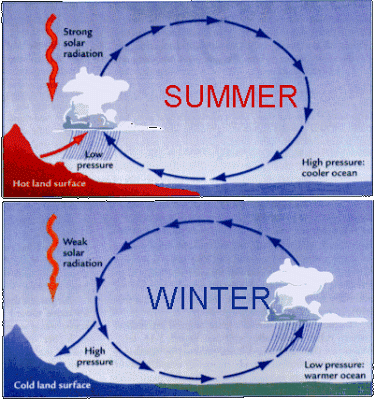Eight people have died in the city of Lahore in Punjab Province, Pakistan, this week, as onset of the Monsoon Season caused the city recorded its most severe rains in 38 years, with 214 mm of rain falling in the 24 hours up to 8 am local time on Tuesday 3 July 2018, compared to an average of 191 mm for the entire month of July. None of the deaths has been attributed directly to drowning, but rather to building collapses and electrocution due to falling power lines.
Floodwaters in Lahore, Pakistan, on Tuesday 3 July 2018. Rahat Dar/Shutterstock.
While the exceptionally high levels of rainfall are clearly a contributing factor, the flooding has also been linked to
rapid urban expansion in many area, which has led to building on areas where soil was previously exposed, reducing the ability of the ground to absorb water and leading to surface flooding.
Floodwaters in Lahore, Pakistan, on Tuesday 3 July 2018. AFP.
The flooding also caused a series of large sinkholes to open up in the central part of the city, with the largest measuring about sixty metres across, and about six metres deep. Sinkholes
are generally caused by water eroding soft limestone or unconsolidated
deposits from beneath, causing a hole that works its way upwards and
eventually opening spectacularly at the surface. Where there are
unconsolidated deposits at the surface they can infill from the sides,
apparently swallowing objects at the surface, including people, without
trace. On this occasion, however, the sinkholes are being linked to poor construction work during the city's rapid expansion.
Sinkhole that opened up in Lahore following heavy rains earlier this week.
Arif Ali/AFP/Getty Images.
Arif Ali/AFP/Getty Images.
Monsoons
are tropical sea breezes triggered by heating of the land during the
warmer part of the year (summer). Both the land and sea are warmed by
the Sun, but the land has a lower ability to absorb heat, radiating it
back so that the air above landmasses becomes significantly warmer than
that over the sea, causing the air above the land to rise and drawing in
water from over the sea; since this has also been warmed it carries a
high evaporated water content, and brings with it heavy rainfall. In the
tropical dry season the situation is reversed, as the air over the land
cools more rapidly with the seasons, leading to warmer air over the
sea, and thus breezes moving from the shore to the sea (where air is
rising more rapidly) and a drying of the climate. This situation is
particularly intense in South Asia, due to the presence of the
Himalayas. High mountain ranges tend to force winds hitting them
upwards, which amplifies the South Asian Summer Monsoon, with higher
winds leading to more upward air movement, thus drawing in further air
from the sea.
Diagrammatic representation of wind and rainfall patterns in a tropical monsoon climate. Geosciences/University of Arizona.
See also...
Follow Sciency Thoughts on Facebook.










